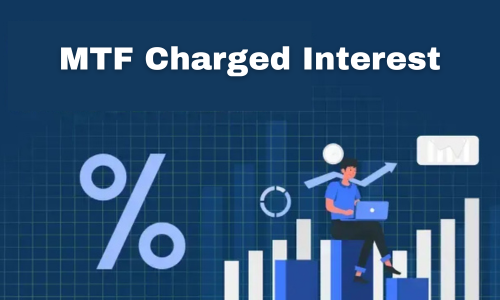In this article, we will discuss about...
Introduction
Let’s talk about MTF—short for Margin Trading Facility.
A lot of people think MTF is risky. Some say it’s only good for short-term trades, or that you’re better off using futures and options.
I get it. The idea of borrowing money to invest in stocks can feel scary. Paying interest sounds like a burden. But what if I told you that, when used wisely, MTF can actually be one of the best tools for long-term investment?
Let’s clear up the confusion and break it down in simple terms.
Don’t let reading hold you back, Watch our video instead
1. “MTF is bad because it charges interest”
Yes, MTF isn’t free. When you use it, you borrow money from your broker to buy more shares—and you pay interest on that borrowed amount.
But think of it like this:
Imagine you’re investing in something steady, like a Nifty ETF. Over the last 15 years, Nifty ETFs have given an average return of 13.5% per year.

Now suppose you borrow money using MTF at 10% interest. Even after paying interest, you’re still earning a net return of 2–3%. That’s extra profit—on borrowed money.
Sure, markets go up and down. Some years might be flat. But over time—especially in a fast-growing economy like India—the market usually trends upward. And that’s why MTF is best for long-term investment: it helps you ride out short-term volatility and stay invested in strong assets.
2. “Why not just use Futures? They don’t charge interest!”
Good question! Futures sound attractive because you don’t pay interest. But here’s what people don’t always tell you:
-
Limited options: Only about 50 stocks are available for futures trading, and just 10–15 of them have good liquidity.
-
Big minimums: Futures are sold in large lots. That can mean investing ₹1–2 lakhs in a single trade—a big risk for small investors.
-
Short life: Futures expire monthly. If you want to hold long-term, you’ll need to keep rolling over your positions every month.
-
High risk: Leverage in futures is huge. Even a small market move can cause big losses.
Let’s be honest—how many retail investors actually make money in futures consistently? Very few.
Now compare that with long-term investing in index funds or good-quality stocks. History shows that almost all long-term investors in Nifty have made money.
So no, futures aren’t necessarily better—especially for the average investor.
3. “MTF is great for short-term or intraday trading”
This is another common belief. Some traders use MTF for intraday trades because it gives leverage.
But here’s the catch:
-
You still pay interest, even if you hold for just one day.
-
Intraday moves are small—usually just 1–3%.
-
Algo traders dominate the intraday market. They’re faster and smarter, using automation to grab opportunities in milliseconds.

Unless you have your own algorithm or advanced trading setup, you’re already behind. And if you’re not making money with your own capital, adding borrowed money (plus interest) only makes things worse.
Bottom line? MTF isn’t ideal for short-term or intraday trading.
Why MTF Makes Sense for Long-Term Investors
Here’s what people often overlook: MTF works really well for long-term investment—if you use it properly.
With MTF:
-
You buy actual shares, not contracts.
-
You can start with as little as ₹1,000.
-
You own the shares in your demat account.
-
You get dividends, bonuses, and more.

Even with interest, if your investment earns more than your borrowing cost, you’re still in profit.
Example: If your portfolio earns 14% annually and you pay 10% interest, that’s a 4% gain on borrowed money. Over a few years, that adds up big time!
“But what about the interest cost?”
Great point. Let’s put it into perspective.
Paying interest on MTF is no different than paying an EMI on a home or car loan. In fact, it’s better:
-
A car is a depreciating asset—it loses value over time.
-
Stocks, on the other hand, are income-generating and usually appreciate over time.
So why is it normal to take a car loan but considered “risky” to invest using margin?
Even big companies grow by taking loans. Debt isn’t bad—it’s only bad when misused.
Is MTF Right for You?
It depends on your mindset and goals.
MTF can be a smart choice if you are:
-
Investing for the long-term
-
Patient through market ups and downs
-
Okay with paying some interest to grow faster
But MTF may not be right if you:
-
Want fast profits
-
Plan to do intraday trading
-
Can’t handle short-term losses
Conclusion
We need to stop treating MTF like it’s dangerous or only for pros. It’s simply a financial tool—just like a home loan or business loan.
Used carefully, MTF lets you:
-
Take larger positions in good stocks
-
Hold for years, not days
-
Grow your wealth steadily over time
